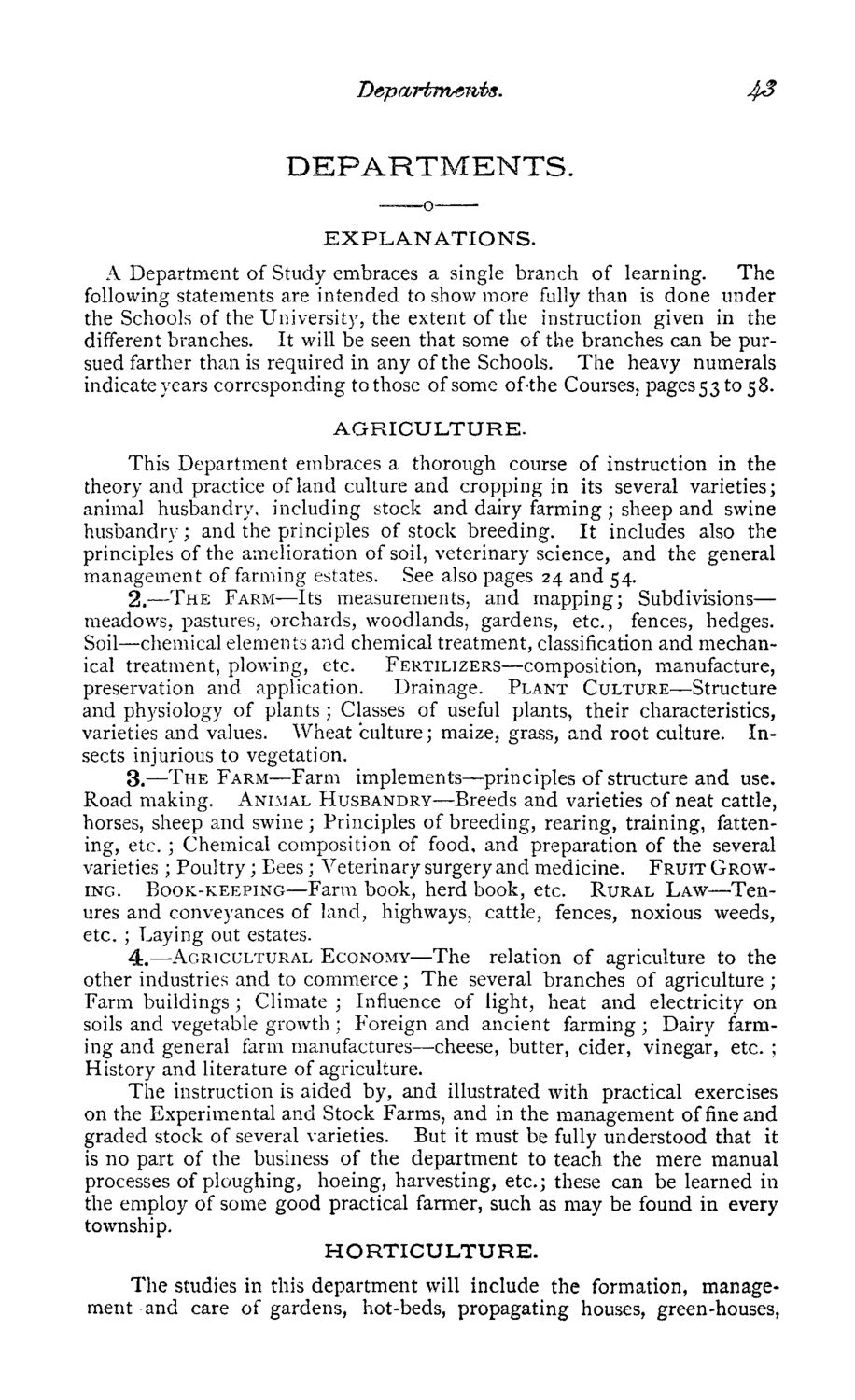| |
| |
Caption: Course Catalog - 1872-1873
This is a reduced-resolution page image for fast online browsing.

EXTRACTED TEXT FROM PAGE:
Departments. DEPARTMENTS. -o- EXPLANATIONS. A Department of Study embraces a single branch of learning. The following statements are intended to show more fully than is done under the Schools of the University, the extent of the instruction given in the different branches. It will be seen that some of the branches can be pursued farther than is required in any of the Schools. The heavy numerals indicate years corresponding to those of some of'the Courses, pages53tos8. AGRICULTURE. This Department embraces a thorough course of instruction in the theory and practice of land culture and cropping in its several varieties; animal husbandry, including stock and dairy farming ; sheep and swine husbandry; and the principles of stock breeding. It includes also the principles of the amelioration of soil, veterinary science, and the general management of farming estates. See also pages 24 and 54. 2.—THE FARM—Its measurements, and mapping; Subdivisions— meadows, pastures, orchards, woodlands, gardens, etc., fences, hedges. Soil—chemical elements and chemical treatment, classification and mechanical treatment, plowing, etc. FERTILIZERS—composition, manufacture, preservation and application. Drainage. PLANT CULTURE—Structure and physiology of plants ; Classes of useful plants, their characteristics, varieties and values. Wheat culture; maize, grass, and root culture. Insects injurious to vegetation. 3.—THE FARM—Farm implements—principles of structure and use. Road making. ANIMAL HUSBANDRY—Breeds and varieties of neat cattle, horses, sheep and swine; Principles of breeding, rearing, training, fattening, etc. ; Chemical composition of food, and preparation of the several varieties; Poultry; Eees; Veterinary surgery and medicine. FRUIT GROWING. BOOK-KEEPING—Farm book, herd book, etc. RURAL LAW—Tenures and conveyances of land, highways, cattle, fences, noxious weeds, etc. ; Laying out estates. 4.—AGRICULTURAL ECONOMY—The relation of agriculture to the other industries and to commerce; The several branches of agriculture ; Farm buildings ; Climate ; Influence of light, heat and electricity on soils and vegetable growth ; Foreign and ancient farming ; Dairy farming and general farm manufactures—cheese, butter, cider, vinegar, etc. ; History and literature of agriculture. The instruction is aided by, and illustrated with practical exercises on the Experimental and Stock Farms, and in the management offineand graded stock of several varieties. But it must be fully understood that it is no part of the business of the department to teach the mere manual processes of ploughing, hoeing, harvesting, etc.; these can be learned in the employ of some good practical farmer, such as may be found in every township. HORTICULTURE. The studies in this department will include the formation, management and care of gardens, hot-beds, propagating houses, green-houses,
| |